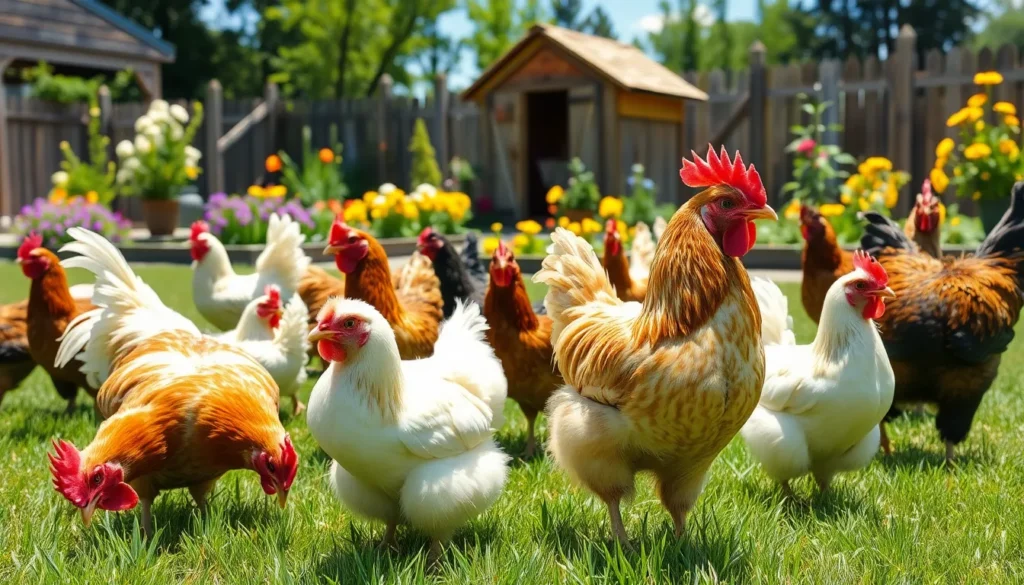We’ve all seen chickens pecking around backyards and farms, but there’s far more to these remarkable birds than meets the eye. These feathered creatures have captivated humans for thousands of years, transforming from wild jungle fowl into one of the industry’s most important domesticated animals.
Whether you’re considering raising backyard chickens, curious about their fascinating behaviors, or simply want to understand these amazing birds better, you’ve come to the right place. Chickens aren’t just egg-laying machines – they’re intelligent, social creatures with complex personalities and surprising abilities that’ll change how you view them forever.
From their ancient origins to their modern-day significance in agriculture and sustainable living, we’re about to explore everything you need to know about chickens. Get ready to discover why millions of people worldwide are falling in love with these incredible birds and how they might just become your new favorite feathered friends.
What Is a Chicken Bird?
Chickens belong to the species Gallus gallus domesticus and represent the most widespread domesticated bird on Earth with over 33 billion individuals worldwide. These remarkable creatures descended from wild red junglefowl approximately 8,000 years ago in Southeast Asia.
Physical Characteristics and Anatomy
Chickens display distinctive anatomical features that make them easily recognizable among poultry species. Adult chickens typically weigh between 2-10 pounds depending on their breed, with roosters generally larger than hens.
Their most prominent features include:
| Body Part | Description | Function |
|---|---|---|
| Comb | Fleshy red crown on head | Temperature regulation and mate attraction |
| Wattles | Red flaps beneath beak | Heat dissipation and social signaling |
| Tail feathers | Long curved plumes | Balance and display purposes |
| Spurs | Sharp projections on legs | Defense mechanism in roosters |
Chickens possess excellent color vision with the ability to see ultraviolet light through specialized cone cells in their eyes. Their beaks contain approximately 300 taste buds compared to humans’ 10,000, yet they can distinguish between sweet, sour, bitter and umami flavors.
Feather patterns create insulation through multiple layers including contour feathers for protection and down feathers for warmth retention. Wings span 24-35 inches across in most breeds, though flight capabilities remain limited to short distances of 10-15 feet.
Breed Variations and Classifications
Over 500 recognized chicken breeds exist globally, categorized into distinct groups based on their primary purposes and characteristics. The American Poultry Association recognizes breeds across six main classes: American, Asiatic, Continental, English, Mediterranean, and Game.
Egg Production Breeds excel in laying capacity:
- Leghorns produce 280-320 white eggs annually
- Rhode Island Reds deliver 200-300 brown eggs per year
- Australorps hold records with 364 eggs laid in 365 days
Meat Production Breeds focus on rapid growth:
- Cornish Cross chickens reach market weight of 4-6 pounds in 6-8 weeks
- Jersey Giants achieve weights up to 13 pounds for roosters
- Freedom Rangers provide slower growth with enhanced flavor development
Dual Purpose Breeds combine egg and meat production:
- Buff Orpingtons lay 180-200 eggs while maintaining good meat quality
- New Hampshire Reds balance 200 eggs annually with substantial body size
- Sussex chickens offer versatility in both production categories
Ornamental Breeds emphasize unique appearances:
- Silkies feature hair-like feathers and black skin pigmentation
- Polish chickens display elaborate feathered crests
- Frizzles showcase curled feathers that spiral outward from their bodies
Size classifications range from bantam varieties weighing 1-2 pounds to large fowl exceeding 8 pounds in mature weight.
Origins and History of Chicken Birds
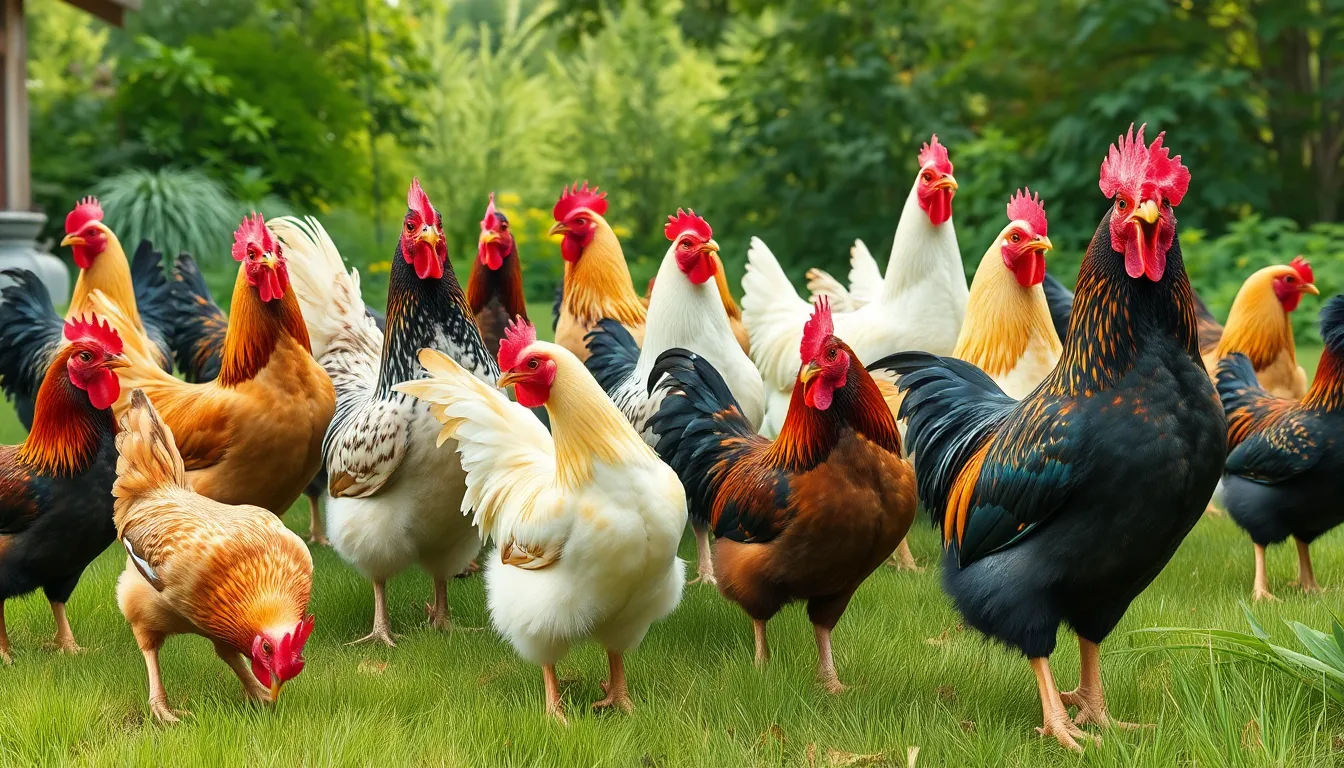
Chickens trace their remarkable journey from ancient Southeast Asian jungles to modern backyards across the globe. Understanding their evolutionary path reveals how these birds became humanity’s most successful domesticated species.
Domestication Timeline
Archaeological evidence places chicken domestication between 8,000 and 10,000 years ago in Southeast Asia, specifically in present-day Thailand and Vietnam. Chinese records from 6,000 BCE document early chicken keeping practices, while Egyptian hieroglyphs from 1400 BCE show chickens in royal courts.
| Time Period | Region | Milestone |
|---|---|---|
| 8,000 BCE | Southeast Asia | Initial domestication begins |
| 6,000 BCE | China | First documented breeding programs |
| 1400 BCE | Egypt | Royal court integration |
| 800 BCE | Greece | Mediterranean spread |
| 100 CE | Roman Empire | Widespread European adoption |
Phoenician traders carried chickens across the Mediterranean around 800 BCE, establishing populations throughout Greece and Rome. European colonization later spread these birds to the Americas, Africa, and Australia between the 15th and 18th centuries.
Evolution from Wild Ancestors
Red junglefowl (Gallus gallus) represent the primary ancestor of modern domestic chickens, contributing approximately 95% of their genetic makeup. These wild birds inhabited dense tropical forests across Southeast Asia, displaying brilliant plumage and complex social behaviors.
Grey junglefowl (Gallus sonneratii) provided secondary genetic contributions through crossbreeding, particularly influencing yellow skin coloration in certain breeds. Ceylon junglefowl (Gallus lafayettii) and green junglefowl (Gallus varius) contributed minimal genetic material to domestic populations.
Selective breeding transformed wild characteristics over millennia, increasing body size from 1.5 pounds in red junglefowl to 10+ pounds in modern meat breeds. Egg production increased dramatically from 12-15 eggs annually in wild populations to 300+ eggs in commercial laying hens.
Domestication eliminated seasonal breeding patterns, allowing year-round reproduction and consistent food production for human communities.
Different Types of Chicken Birds

Chicken breeds fall into four main categories based on their primary characteristics and intended purposes. Each category serves exact agricultural and recreational needs in modern poultry keeping.
Egg-Laying Breeds
Egg-laying breeds excel at consistent egg production throughout the year. Leghorns produce up to 320 white eggs annually and weigh between 4-5 pounds at maturity. Rhode Island Reds lay approximately 250-300 brown eggs per year while maintaining excellent cold weather tolerance. Australorps hold the industry record for egg production with one hen laying 364 eggs in 365 days. Sussex chickens deliver 250 eggs annually and adapt well to free range environments.
| Breed | Annual Egg Production | Egg Color | Average Weight |
|---|---|---|---|
| Leghorn | 280-320 eggs | White | 4-5 pounds |
| Rhode Island Red | 250-300 eggs | Brown | 6-8 pounds |
| Australorp | 250-300 eggs | Brown | 5-7 pounds |
| Sussex | 250 eggs | Cream/Brown | 6-7 pounds |
Meat Production Breeds
Meat production breeds grow rapidly and develop substantial muscle mass for commercial processing. Cornish Cross chickens reach market weight of 8-12 pounds within 6-8 weeks of hatching. Freedom Rangers mature more slowly at 9-11 weeks but offer superior flavor and foraging abilities. Jersey Giants represent the largest chicken breed with roosters weighing up to 15 pounds and hens reaching 11 pounds. Bresse chickens command premium prices due to their exceptional meat quality and protected designation of origin status in France.
Dual-Purpose Breeds
Dual-purpose breeds balance moderate egg production with adequate meat yield for small scale operations. Buff Orpingtons lay 180-200 brown eggs yearly while roosters dress out at 8-10 pounds for meat processing. Plymouth Rocks produce 200 eggs annually and provide 7-8 pounds of dressed weight. New Hampshire Reds excel in both categories with 200-280 eggs per year and excellent meat quality. Wyandottes combine cold hardiness with 180-260 annual eggs and respectable meat production capabilities.
Ornamental and Show Breeds
Ornamental and show breeds prioritize aesthetic appeal over production characteristics. Silkies feature fluffy feathers that feel like silk and come in multiple color varieties including white, black, and buff. Polish chickens display distinctive feather crests that obscure their vision but create striking visual appeal. Frizzles possess curled feathers that grow outward instead of lying flat against their bodies. Sebrights represent true bantam breeds weighing only 1-2 pounds with intricate laced feather patterns in gold or silver colorations.
Chicken Bird Behavior and Intelligence
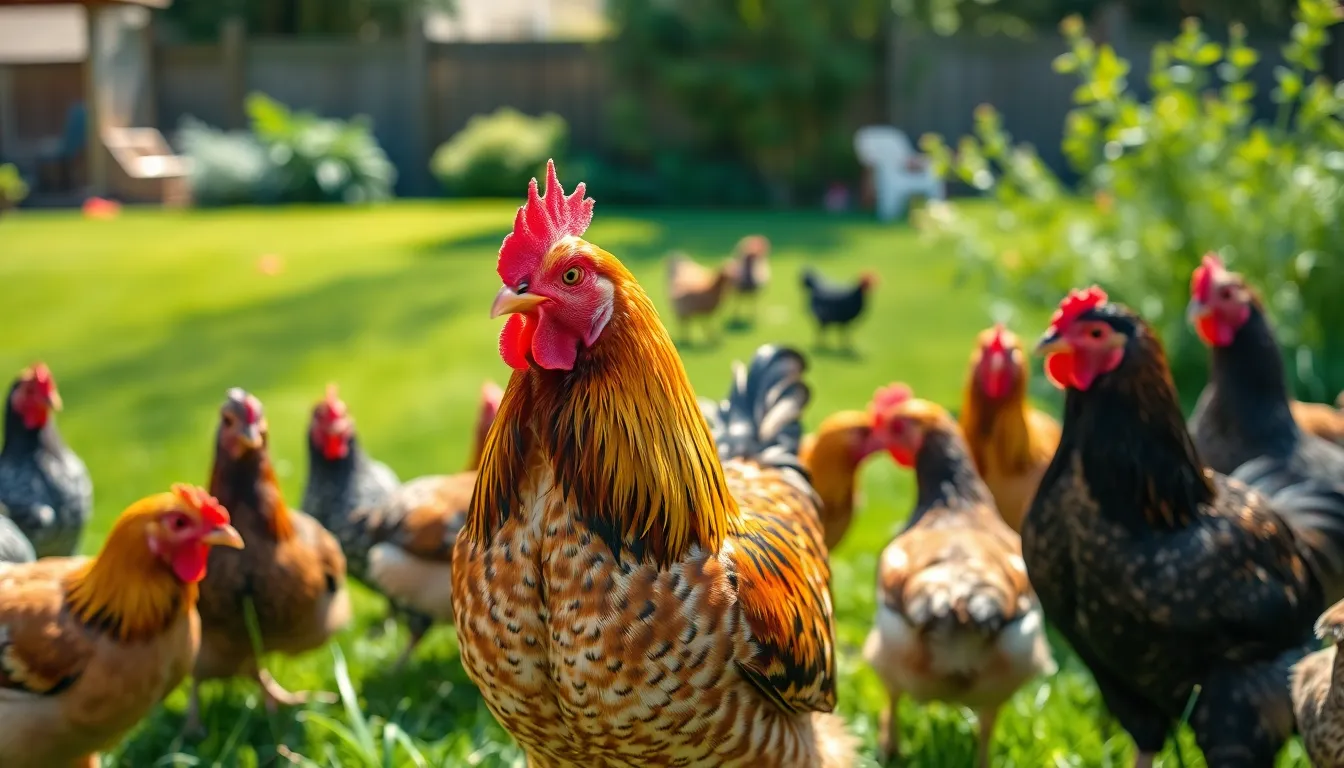
Chickens demonstrate remarkable cognitive abilities and complex social behaviors that rival those of many mammals. We observe sophisticated communication systems and problem-solving skills that challenge traditional perceptions of avian intelligence.
Social Structure and Pecking Order
Chickens establish clear hierarchical structures within their flocks through a system known as the pecking order. This dominance hierarchy determines access to food, water, nesting sites, and roosting positions. Dominant birds maintain their status through displays of aggression such as pecking, chasing, and wing-flapping behaviors.
Flock dynamics typically involve 8 to 12 chickens in natural settings, though domestic flocks can range from 3 to over 100 birds. Higher-ranking chickens eat first and select premium roosting spots, while subordinate members wait their turn. The alpha hen controls group movements and decisions about foraging locations.
Status within the hierarchy remains relatively stable once established, though challenges occur during molting periods when birds appear more vulnerable. New birds introduced to existing flocks face aggressive behavior until they find their place in the established order. Young chickens learn their social positions through observation and testing interactions with flock members.
Communication Methods
Chickens use over 30 distinct vocalizations to convey exact messages to their flock members. Roosters produce loud crowing sounds that serve multiple purposes including territory marking, flock coordination, and predator warnings. Hens emit different calls for various situations such as egg-laying announcements, food discoveries, and danger alerts.
Body language plays an equally important role in chicken communication systems. Dominant birds display erect postures with raised tail feathers, while submissive chickens crouch low with flattened feathers. Head movements, wing positions, and neck extensions communicate intentions during social interactions.
Chickens recognize individual flock members through visual cues and voice patterns. They remember up to 100 different faces and associate exact calls with particular birds. Mother hens communicate with their chicks through soft clucking sounds that provide comfort and guidance during foraging activities.
Problem-Solving Abilities
Chickens demonstrate impressive cognitive flexibility when faced with novel challenges and environmental changes. They navigate complex mazes with success rates exceeding 70% after just a few training sessions. Research studies show chickens can learn to operate simple mechanisms to access food rewards.
Mathematical concepts appear within chicken behavior patterns, as they can count up to 5 objects and understand basic addition and subtraction principles. Chickens exhibit self-control by choosing delayed gratification when larger food rewards become available after waiting periods. They also display tool use behaviors, manipulating objects to reach desired items.
Memory retention spans several months for learned behaviors and spatial information. Chickens remember hiding places for food caches and return to productive foraging locations days or weeks later. Young chickens learn survival skills through imitation of adult behaviors, demonstrating observational learning capabilities that enhance their problem-solving repertoire.
Caring for Chicken Birds
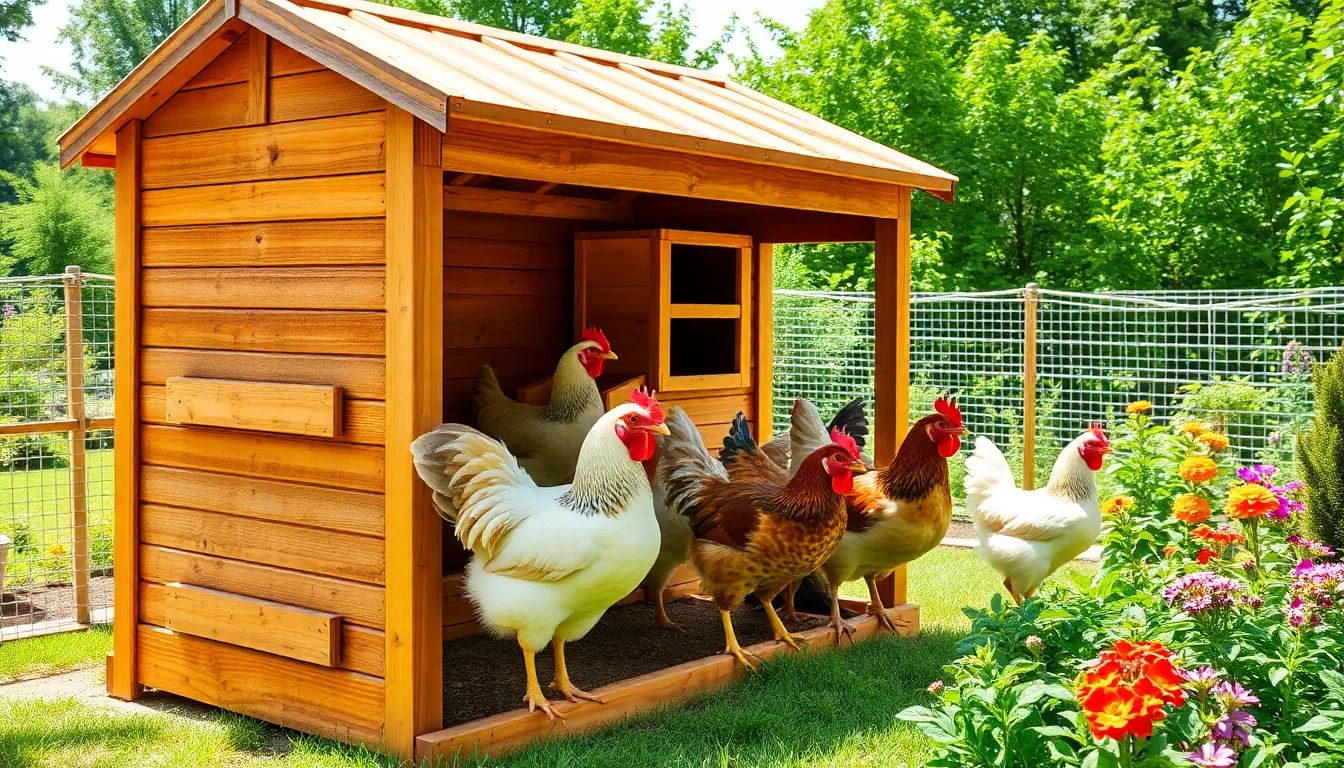
Proper care transforms chickens from mere livestock into thriving companions that reward us with fresh eggs and captivating personalities. Successful chicken care involves three fundamental components: appropriate housing, balanced nutrition, and proactive health management.
Housing and Coop Requirements
Chickens require secure shelter that protects them from predators while providing adequate space for natural behaviors. Standard coops accommodate 4 square feet per bird inside the structure, with an additional 10 square feet per bird in outdoor run areas. Proper ventilation prevents moisture buildup and ammonia accumulation, requiring openings near the roof that don’t create drafts at bird level.
Roosting bars positioned 18-24 inches above the ground give chickens elevated sleeping areas that satisfy their natural instincts. Each bird needs 8-12 inches of roosting space to prevent overcrowding and territorial disputes. Nesting boxes, placed at a ratio of one box per four hens, encourage egg laying in designated areas and reduce stress among the flock.
Strong wire mesh with openings smaller than 1 inch prevents predators like raccoons and weasels from accessing the coop. Hardware cloth provides superior protection compared to chicken wire, which serves better for containing birds than excluding threats. Automatic door systems offer convenience while ensuring consistent coop security during dawn and dusk transitions.
Feeding and Nutrition Needs
Balanced nutrition supports egg production, feather quality, and overall chicken health throughout different life stages. Layer feed containing 16-18% protein meets the dietary requirements of mature hens, while starter feed with 20-24% protein supports rapid growth in chicks under 8 weeks old. Grower feed with 16-20% protein bridges the gap between starter and layer formulations for adolescent birds.
Calcium supplementation through oyster shell or crushed eggshells strengthens eggshells and prevents calcium deficiency in laying hens. Fresh water access remains critical, with each bird consuming 2-3 times more water than feed on a daily basis. Clean waterers positioned at appropriate heights prevent contamination while encouraging consistent hydration.
Treats like kitchen scraps can comprise up to 10% of a chicken’s daily diet without disrupting nutritional balance. Safe options include leafy greens, fruits, and vegetable scraps, while avoiding chocolate, avocado, and onions that prove toxic to chickens. Scratch grains scattered in the late afternoon provide enrichment activities while supplementing basic nutrition requirements.
Health Care and Common Issues
Preventive health measures reduce disease occurrence and maintain productive flocks through regular monitoring and intervention. Daily observation identifies changes in behavior, appetite, or egg production that signal potential health problems before they become severe. Common indicators include lethargy, reduced feed consumption, abnormal droppings, or respiratory symptoms like wheezing and nasal discharge.
Parasites represent frequent challenges in chicken keeping, with mites, lice, and worms affecting both commercial and backyard flocks. External parasites cause feather loss and skin irritation, while internal parasites like roundworms and tapeworms impact digestion and nutrient absorption. Regular coop cleaning and periodic deworming treatments prevent parasite populations from establishing harmful levels.
Respiratory infections occur when chickens experience stress, overcrowding, or exposure to drafts and dampness. Symptoms include sneezing, coughing, and swollen sinuses that require prompt attention to prevent flock-wide transmission. Quarantine procedures isolate sick birds while antibiotic treatments prescribed by veterinarians address bacterial infections effectively.
| Health Issue | Primary Symptoms | Prevention Method |
|---|---|---|
| Mites/Lice | Feather loss, scratching | Regular coop cleaning, dust baths |
| Internal Worms | Weight loss, pale combs | Routine fecal testing, deworming |
| Respiratory Infection | Wheezing, nasal discharge | Proper ventilation, stress reduction |
| Egg Binding | Straining, lethargy | Adequate calcium, proper nutrition |
Benefits of Raising Chicken Birds
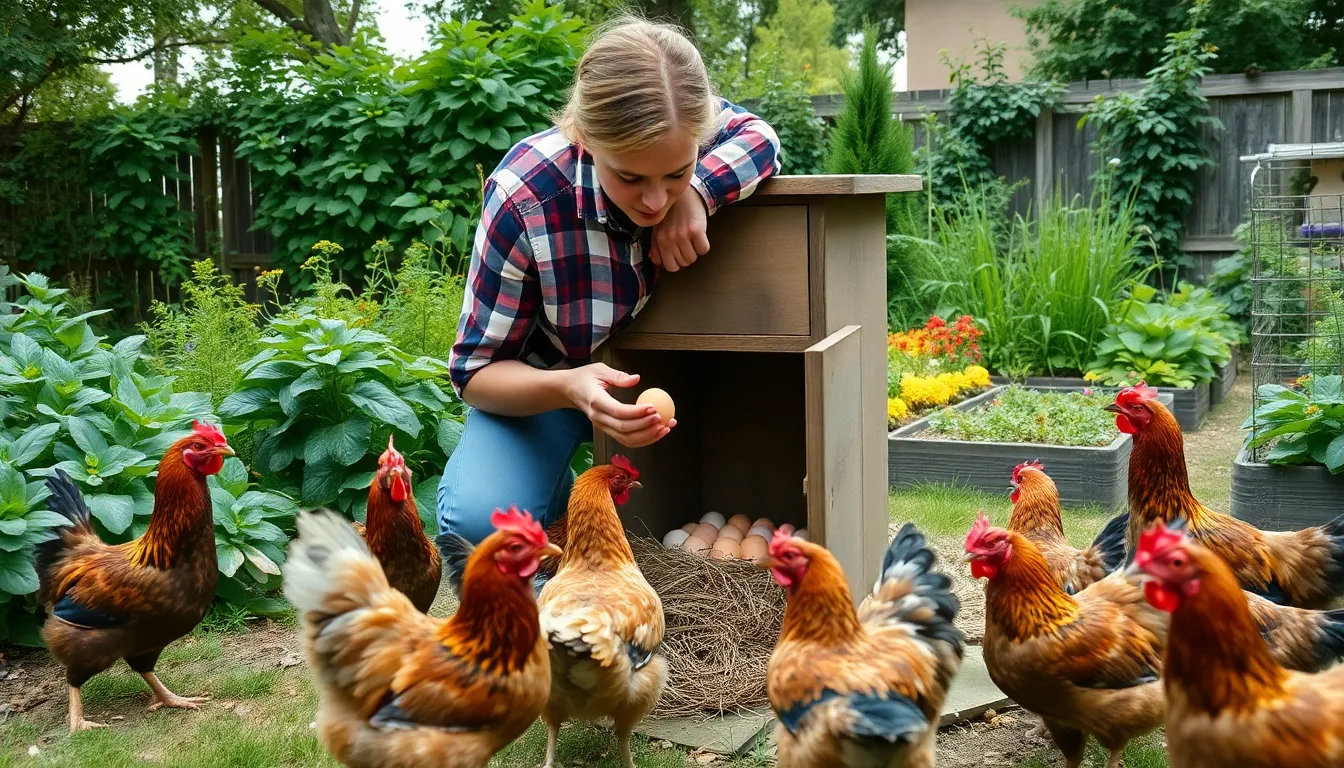
Raising chicken birds transforms our daily lives through practical advantages that extend far beyond simple companionship. These remarkable creatures provide multiple benefits that make them valuable additions to our homes and gardens.
Fresh Egg Production
Backyard chickens deliver fresh eggs directly to our kitchen tables with nutritional quality that surpasses store-bought alternatives. A single productive hen produces 250 to 300 eggs annually depending on her breed and age. Rhode Island Reds consistently lay 5 to 6 eggs weekly while Leghorns produce up to 320 eggs per year.
Our fresh eggs contain 25% more vitamin E and 75% more beta carotene compared to commercial eggs from factory farms. The shells exhibit deeper orange yolks that indicate higher nutrient density and superior flavor profiles. Collecting eggs becomes a daily ritual that connects us directly to our food source.
Egg production costs average $2 to $3 per dozen when we factor in feed expenses and housing maintenance. Commercial organic eggs retail for $4 to $6 per dozen in most markets. We recover our initial investment in chickens within 8 to 12 months through consistent egg production.
Natural Pest Control
Chickens function as living pest control systems that eliminate harmful insects without chemical interventions. A mature chicken consumes 50 to 100 insects daily including ticks, mosquitoes, beetles, and grubs. These birds actively hunt Japanese beetles, grasshoppers, and cucumber beetles that damage our vegetable gardens.
Our chickens patrol yards and garden beds while searching for protein sources beneath plant debris and soil surfaces. They scratch through mulch and compost piles to uncover slug eggs, termite colonies, and ant nests. Free range chickens reduce tick populations by up to 80% in areas where they regularly forage.
Pest control through chickens eliminates our reliance on toxic pesticides that harm beneficial insects like bees and butterflies. We create balanced ecosystems where natural predator relationships maintain healthy insect populations without chemical disruption.
Composting and Garden Benefits
Chicken manure accelerates composting processes while creating nitrogen rich fertilizer for our gardens. Fresh chicken droppings contain 4% nitrogen, 2% phosphorus, and 1% potassium that plants require for optimal growth. We collect approximately 130 pounds of manure annually from each mature bird.
Our composted chicken manure improves soil structure and water retention in garden beds. The organic matter increases earthworm populations that naturally aerate compacted soil. Vegetables grown in chicken manure compost produce 30% higher yields compared to synthetic fertilizers.
Chickens process kitchen scraps including vegetable peels, fruit cores, and leftover grains into valuable compost materials. They consume 25% of our household organic waste while converting it into garden nutrients. We reduce landfill contributions while creating sustainable cycles between our kitchen, chickens, and garden spaces.
Chicken Birds in Different Cultures
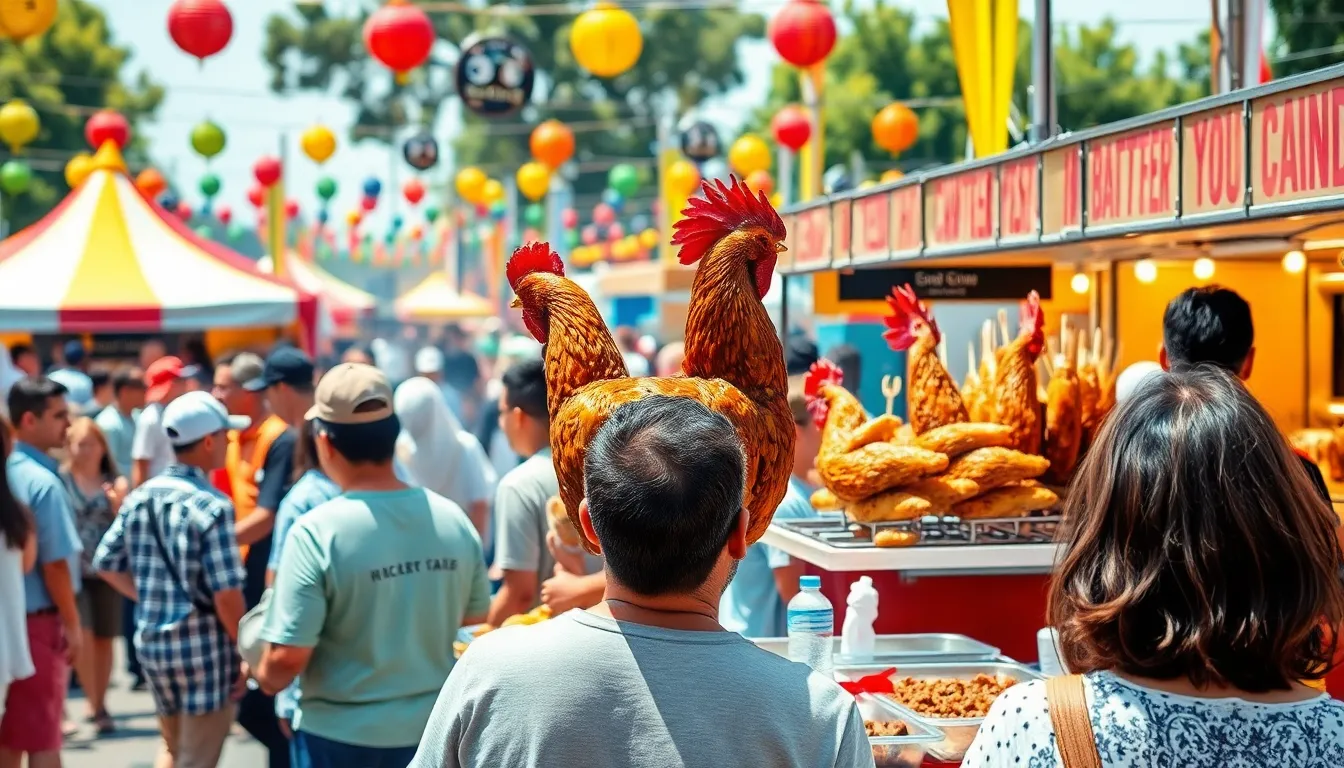
Chicken birds have woven themselves into the cultural fabric of societies worldwide, transcending their agricultural origins to become symbols of prosperity, spirituality, and culinary excellence. Different cultures have developed unique relationships with these remarkable birds that reflect their values, beliefs, and traditions.
Culinary Traditions Worldwide
Culinary traditions featuring chicken birds vary dramatically across global cultures, each reflecting distinct cooking methods and flavor profiles. Chinese cuisine showcases chicken birds in dishes like Kung Pao chicken and Peking duck-style preparations, utilizing techniques that date back over 2,000 years. Japanese culture transforms chicken birds into yakitori, teriyaki, and karaage, emphasizing precise cooking methods and seasonal ingredients.
Mediterranean cultures prepare chicken birds with olive oil, herbs, and citrus, creating dishes such as Greek chicken souvlaki and Spanish pollo al ajillo. Indian subcontinent traditions feature chicken birds in complex spice blends, producing tandoori chicken, butter chicken, and biryani preparations that incorporate over 15 different aromatic spices.
African culinary traditions use chicken birds in stews and grilled preparations, with Ethiopian doro wat and South African peri-peri chicken representing distinctive regional approaches. Latin American cultures celebrate chicken birds through dishes like Peruvian pollo a la brasa and Mexican mole poblano, combining indigenous ingredients with colonial influences.
| Region | Signature Dish | Primary Cooking Method | Cultural Significance |
|---|---|---|---|
| China | Kung Pao Chicken | Stir-frying | Symbol of good fortune |
| Japan | Yakitori | Grilling | Social bonding food |
| India | Tandoori Chicken | Clay oven roasting | Festive celebration dish |
| Greece | Chicken Souvlaki | Skewer grilling | Traditional taverna staple |
| Peru | Pollo a la Brasa | Rotisserie roasting | National comfort food |
Cultural and Religious Significance
Religious traditions across cultures have assigned deep spiritual meaning to chicken birds, often representing renewal, sacrifice, and divine connection. Christianity incorporates rooster symbolism as a reminder of faith and redemption, referencing Peter’s denial and subsequent spiritual awakening. Islamic cultures view chicken birds as halal protein sources blessed for consumption, with exact slaughter rituals ensuring religious compliance.
Hinduism considers chicken birds differently across regions, with some communities embracing them while others maintain vegetarian practices based on ahimsa principles. Buddhist traditions generally discourage consuming chicken birds as part of compassionate living, though practices vary among different schools of thought.
Ancient Greek and Roman cultures associated roosters with gods like Apollo and Mercury, using them in divination practices and sacrificial ceremonies. Chinese zodiac traditions honor the rooster as one of twelve celestial animals, representing punctuality, honesty, and confidence in people born during rooster years.
African traditional religions often use chicken birds in spiritual ceremonies, viewing them as messengers between earthly and spiritual realms. Voodoo practices in Haiti and New Orleans incorporate chicken birds into rituals for protection, healing, and communication with ancestors.
Modern secular cultures celebrate chicken birds through festivals like the annual Chicken Festival in Wayne, Nebraska, and the International Chicken Wing Festival in Buffalo, New York, drawing thousands of participants celebrating culinary traditions and community bonding.
Economic Impact of Chicken Birds
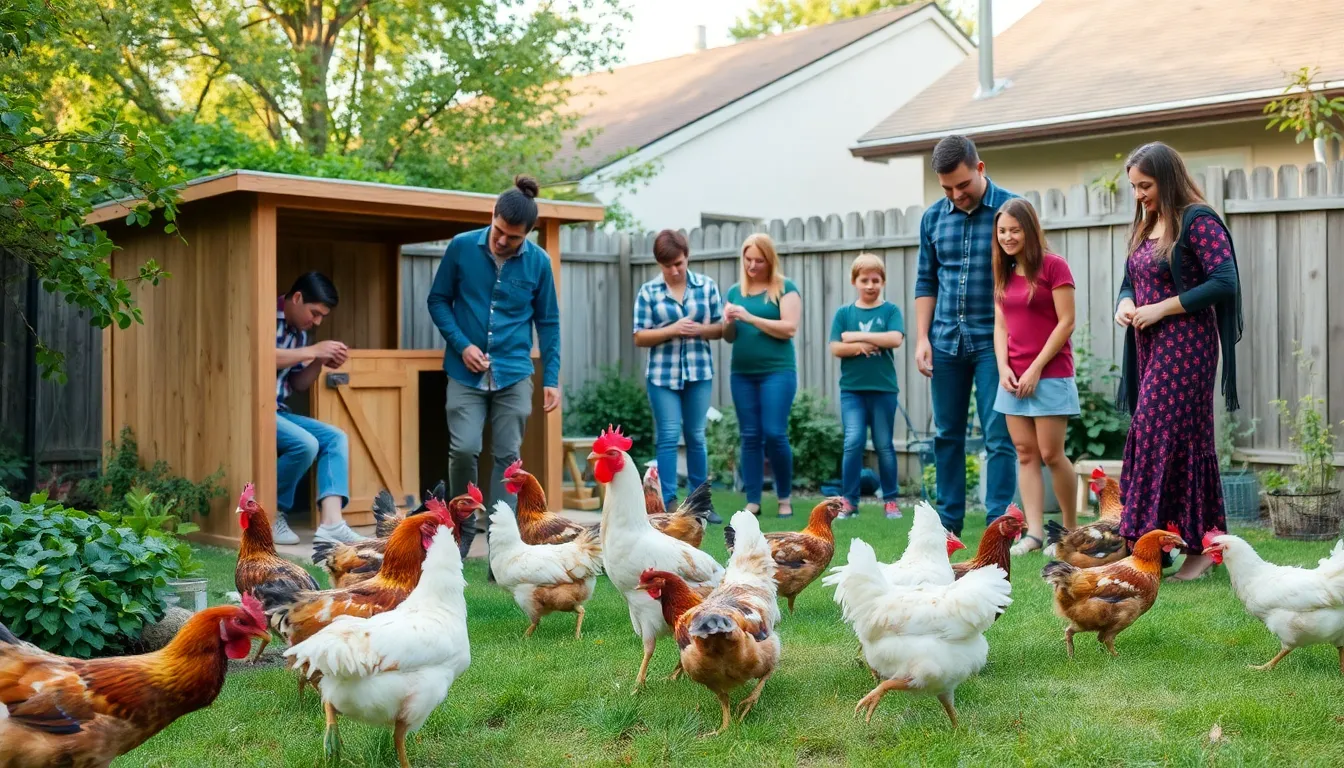
Chicken birds generate substantial economic value through both large-scale commercial operations and grassroots backyard movements. These feathered contributors drive billions in revenue while creating employment opportunities across multiple sectors.
Commercial Poultry Industry
Commercial poultry operations form a $200 billion global industry that employs over 2.5 million workers worldwide. Large-scale chicken farms produce approximately 130 billion pounds of chicken meat annually in the United States alone, making poultry the most consumed protein source domestically.
Processing facilities across rural communities provide stable employment opportunities for approximately 350,000 Americans, with average wages ranging from $25,000 to $45,000 annually. Feed manufacturers, equipment suppliers, and transportation companies create additional downstream economic activity worth $15 billion per year.
Export markets contribute $4.3 billion to the U.S. economy through chicken meat and egg shipments to over 130 countries. Major destinations include Mexico, Canada, and various Asian markets where American chicken products command premium prices.
| Economic Metric | Value |
|---|---|
| Global industry value | $200 billion |
| U.S. meat production | 130 billion pounds |
| Direct employment | 350,000 jobs |
| Export revenue | $4.3 billion |
| Downstream economic impact | $15 billion |
Backyard Chicken Movement
Backyard chicken ownership creates economic ripple effects through equipment purchases, feed sales, and veterinary services. Urban and suburban chicken keepers spend an average of $300 to $500 annually per flock on supplies including coops, feeders, bedding, and specialized feeds.
Local feed stores benefit from increased sales volumes as backyard flocks consume approximately 100 pounds of feed per chicken annually. Hardware stores experience higher demand for construction materials as families build custom coops and runs, generating an estimated $2.8 billion in retail sales nationwide.
Small-scale egg sales provide supplemental income for approximately 1.2 million American households, with farm-fresh eggs selling for $3 to $6 per dozen compared to $2.50 for conventional store-bought eggs. Specialty breed chickens and fertile hatching eggs create niche markets where rare varieties command prices between $50 to $200 per bird.
Veterinary practices expand their services to accommodate backyard poultry, with routine care visits averaging $75 to $150 per consultation. Educational workshops and chicken-keeping courses generate additional revenue streams for agricultural extension offices and private instructors.
Conclusion
We’ve explored the remarkable journey of chickens from wild jungle fowl to our beloved companions and agricultural partners. These intelligent birds continue to surprise us with their cognitive abilities and prove they’re far more than simple farm animals.
Whether you’re drawn to fresh backyard eggs or fascinated by their rich cultural heritage chickens offer something special for everyone. Their economic impact speaks volumes about their enduring value in our modern industry.
As we look toward the future we can appreciate how these feathered friends have shaped human civilization while continuing to enrich our lives today. The chicken bird truly deserves recognition as one of humanity’s most successful partnerships.
Frequently Asked Questions
What are chickens and how many exist worldwide?
Chickens (Gallus gallus domesticus) are the most widespread domesticated bird on Earth, with over 33 billion individuals globally. They descended from wild red junglefowl around 8,000 years ago in Southeast Asia and have become essential domesticated animals used for egg and meat production worldwide.
When and where were chickens first domesticated?
Archaeological evidence indicates that chicken domestication began between 8,000 and 10,000 years ago in Southeast Asia. Early records from China and Egypt document chicken-keeping practices, and Phoenician traders helped spread chickens across the Mediterranean to Greece, Rome, and eventually worldwide through European colonization.
What are the main types of chicken breeds?
Chicken breeds are categorized into four main groups: egg-laying breeds (like Leghorns and Rhode Island Reds), meat production breeds (such as Cornish Cross), dual-purpose breeds (including Buff Orpingtons), and ornamental breeds (like Silkies and Polish chickens) kept for their aesthetic appeal.
How intelligent are chickens?
Chickens are remarkably intelligent birds with sophisticated communication systems including over 30 distinct vocalizations. They demonstrate impressive problem-solving skills, memory retention, ability to learn through observation, and maintain complex social hierarchies known as pecking orders within their flocks.
What do chickens need for proper care?
Proper chicken care requires secure housing with adequate space and ventilation, balanced nutrition appropriate for their life stage, and proactive health management. Coops must provide protection from predators, and owners should regularly monitor for signs of illness and manage common health issues like parasites.
What are the benefits of raising backyard chickens?
Backyard chickens provide fresh, nutritious eggs (250-300 annually per hen), serve as natural pest control by eating harmful insects, and produce valuable manure for composting. They also help process kitchen scraps into compost materials, creating sustainable cycles between households and gardens.
What is the economic impact of the chicken industry?
The global commercial poultry industry is valued at $200 billion, employing over 2.5 million workers and producing approximately 130 billion pounds of chicken meat annually in the U.S. Backyard chicken owners also contribute economically, spending an average of $300-500 annually per flock on equipment and care.
How do chickens impact different cultures?
Chickens hold significant cultural importance across societies, symbolizing prosperity and spirituality. They feature in diverse culinary traditions like Chinese Kung Pao, Japanese yakitori, and Indian tandoori chicken. Many religions incorporate chickens in rituals, and modern celebrations like Nebraska’s Chicken Festival highlight their cultural relevance.

